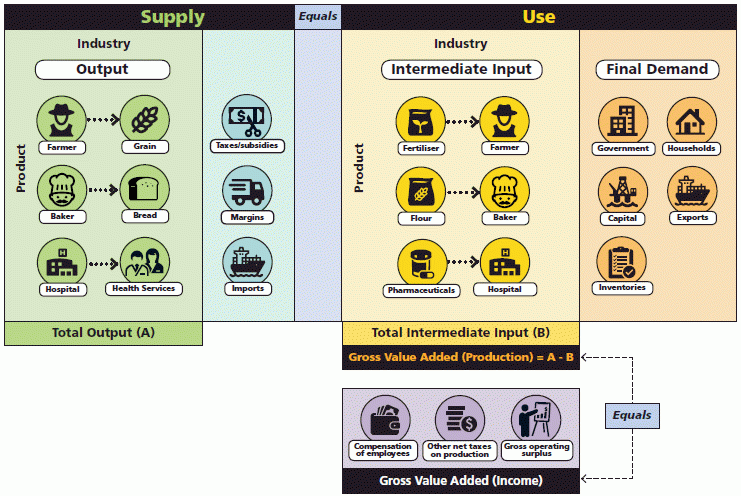Supply-use tables are a vital component of the Australian System of National Accounts. They are used to balance gross domestic product (GDP) for all three approaches (production, expenditure and income), and provide the annual benchmarks from which the quarterly GDP estimates are compiled.
By their design, supply-use tables reconcile the supply of products from domestic and foreign producers available for use in the Australian economy, with the use of these products, either as intermediate inputs in domestic production, or as final use. Additionally, supply and intermediate use by domestic producers are disaggregated by industry, providing a rich dataset for analysis of the Australian economy.
For the supply-use tables to perform their role, the tables must be balanced; that is supply must equal use for all products. Given the size of the tables, this task requires considerable resources to complete each year.
Since 2016-17, the ABS has supplemented the manual balancing process with an automated balancing technique known as constrained optimisation. This article describes the method behind constrained optimisation, and the benefits to both the ABS and users of the supply-use tables from incorporating this technique.
The ABS has also applied this technique in the production of the input-output tables. While this article refers only to the supply-use tables, the method is applied in the same way in producing the input-output tables.
